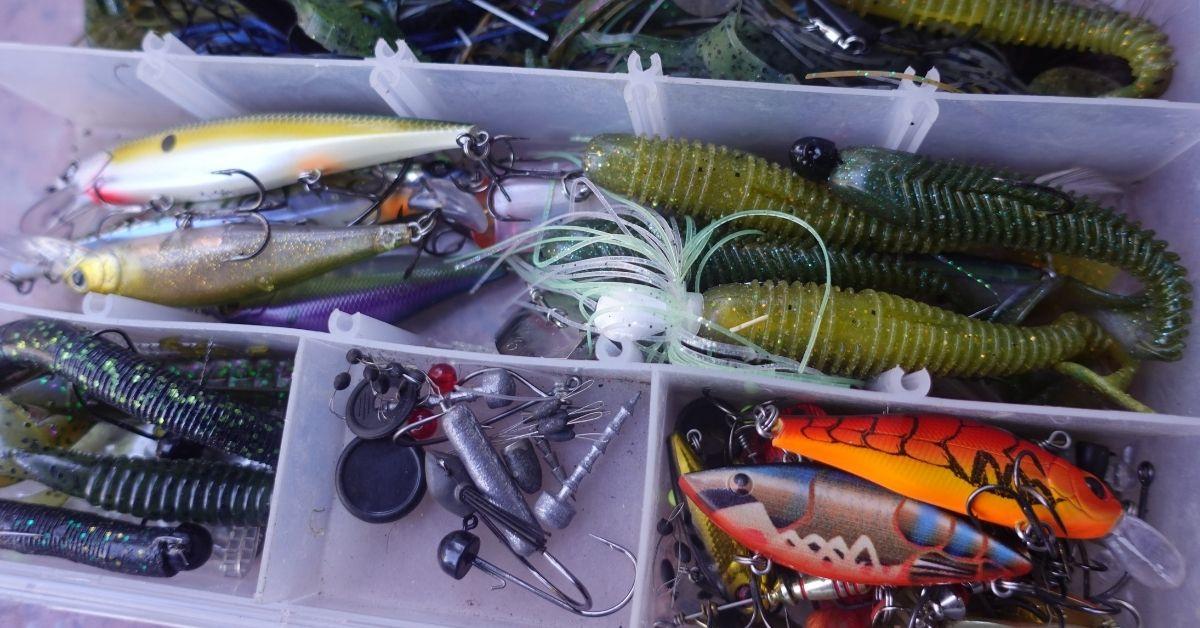Spring Fishing Tip: Slowing Down Will Make You A Better Bass Angler
Bass are on the go in the spring migrating from their wintertime haunts along a transition route to the shallows.
The warming waters of spring speed up a bass’ metabolism so the fish have the energy to chase prey more often while also searching for areas to spawn. The warmer water also activates baitfish and crawfish making them more elusive to predators so bass need to increase their speed to catch up to their prey.
You can now rely on fast-moving lures such as crankbaits and spinnerbaits to catch bass in a chasing mood during early spring. However you still have to dial down the speed of your presentation because the fish are a bit sluggish as the water temperatures slowly rise. Slow-rolling a spinnerbait so its blades barely spin as the lure ticks the bottom can be a deadly presentation for early spring lunkers.
Running Red Baits In The Spring
Red resembles crawfish, which are the primary menu item of a spring bass. Crawfish emerge from rocks in the spring, and bass will be looking in these areas for an easy meal. Match the hatch with red-colored baits.
Winding a crawfish-colored crankbait at a slow, steady pace and pausing the lure briefly when it bumps the bottom or a piece of cover also triggers strikes from early spring bass. As the bass move to shallow water during the prespawn phase, crawfish are emerging from the winter hangouts along shorelines often littered with rocks. Use red-colored crankbaits to fool bass cruising the shallow shorelines looking for crawfish this spring.
Don't Be A Jerk, Slow Down Your Stickbaits
By pausing suspending jerkbaits, anglers can keep baits in their target zone for much longer. This gives leery bass a chance to catch up to your bait and take a swipe.
The slow presentation of twitching and pausing a suspending stickbait employed during the winter also works well on early spring bass. I still use this slow presentation with an alteration to catch early spring bass in the shallows. I switch from the standard 5-inch stickbaits to a 6-inch model to entice bass looking for a bigger meal then.
Weather and fishing pressure are two factors that can force you to slow down your presentation in the spring. Cold fronts in the spring are notorious for shutting down the bass bite but you can still catch fish by switching to slow-moving lures such as jigs and soft plastics rigged Texas style or on shaky jigheads.
Crawling The Jig And Pig
The jig and craw combo help you soak your bait in high percentage areas while using a bait that resembles what bass are interested in most, the crawfish.
A jig and soft plastic trailer is the ideal combo for enticing sluggish bass to bite during a cold front. The combo can be pitched or flipped into heavy cover to let it slowly fall in the bass’ hideout and then barely hopped in place to trigger a reaction strike. The jig can also be slowly dragged or swam along the bottom to catch bottom-hugging bass.
My home waters of Lake of the Ozarks has innumerable bass tournaments throughout the spring so slowing down with finesse presentations is sometimes a must to catch pressured bass. A guide friend of mine frequently sets up his clients with the Ned rig and has them crawl it along the bottom to catch pressured bass.
Slowing Down + Finesse = More Spring Bass
Ned rigs, shaky heads, and the classic curly tail grubs are great ways to target finicky largemouth and smallmouth in the spring
Two of my favorite finesse tactics for spring bass are pitching a finesse jig and small plastic craw to boat docks and dragging a split shot-rigged plastic lizard along pea gravel banks. I pitch the jig to various targets along the dock and let it slowly fall to the bottom where I let it sit for a couple of seconds. If I fail to get a strike on the initial fall or while it is sitting, I reel in the jig and pitch to another spot on the dock. My split shot-rigged lizard presentation consists of slowly dragging the lizard about a foot along the bottom and then pausing it for a couple of seconds before moving it another foot.
Remember To Run It Back
After you find a successful area, fish over the area again with a slower or smaller bait, this can help draw a few extra bites from fish not interested in your first offering.
Another time to slow down your presentation for spring bass is after you have caught some bass while working down a bank with an action lure such as a crankbait or spinnerbait. You should go back down the same bank again but switch to a slower presentation with a jig or soft plastic lure that usually results in a few more bites.
Updated November 15th, 2021 at 1:48 AM CT


